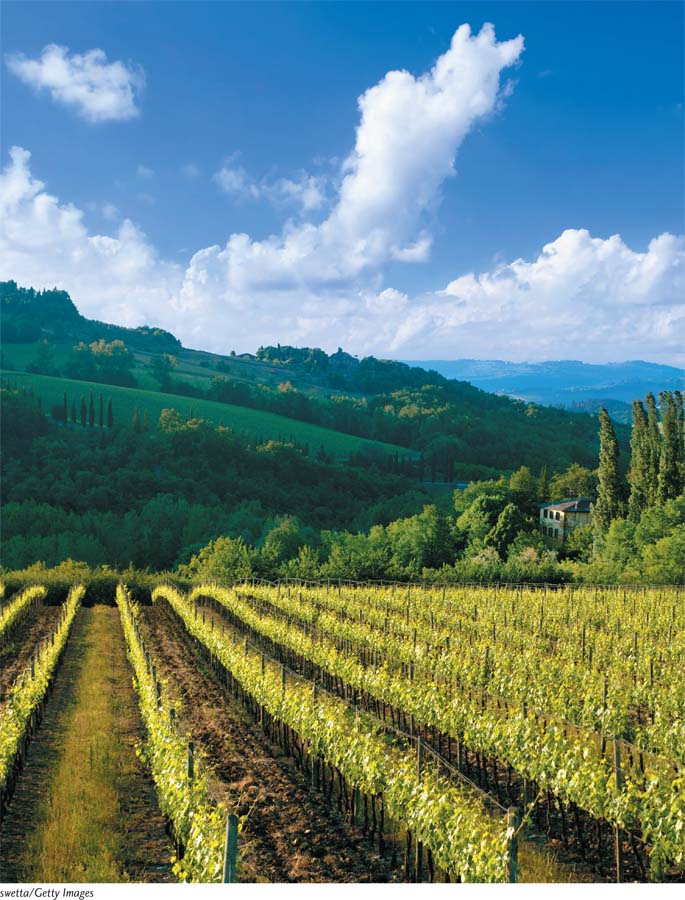Chapter Introduction
chapter 4
Global Climates and Biomes

Growing Grapes to Make a Fine Wine
Winemaking has its origin in the Mediterranean region, in places such as Egypt, Greece, Italy, France, and Spain. As the European nations began to colonize other parts of the world, they brought grape vines with them. Today wine is made throughout the world, but the regions known for the finest wines are the Mediterranean, California, Chile, South Africa, and southwestern Australia. What is it about these regions that favors the production of great wines?
Wine making critically depends on having proper growing conditions for grapes. The best conditions are mild, moist winters and hot, dry summers. Mild winters are important because temperatures that fall below freezing can damage the grape vines. Hot, dry summers are important because they are moderately stressful for the plants, which causes them to create the perfect balance of sugars and acids in the grapes. The dry climate also reduces outbreaks of many grape vine diseases that are more prevalent in humid environments.
Because wine grapes grow best under a narrow range of climatic conditions, global climate change is causing great concern among winegrowers.
The five regions with the best growing conditions are all situated between 30° and 50° latitude, next to the ocean, and typically on the western side of continents. Their similarity in geographic position causes them to have air and water currents that produce comparable climates that provide similar growing conditions. Because of this, these regions also contain plants that look quite similar. Although the plant species in these five locations are not closely related, they consist of drought-
Because wine grapes grow best under a narrow range of climatic conditions, global climate change is causing great concern among winegrowers. For example, scientists in 2013 evaluated the current and future climates in the wine region of California, where 90 percent of U.S. wine is produced. They predicted that many vineyards will have to shift northward to Oregon and Washington by 2040 because the ideal climate for winegrowing will shift northward. Similarly, winemakers in France have experienced a decade of exceptionally hot and dry summers, which has made it difficult to grow the unique varieties of French wine grapes. In contrast, English wineries, which are located farther north and have not previously had ideal conditions for growing wine grapes, are now producing some of their best wines because the current English climate is starting to resemble the historic French climate. As winemakers face the reality of global warming and changing climates, they will have to decide whether to move their vineyards to more hospitable climates, modify the growing conditions by adding irrigation, or plant varieties of grapes that are more tolerant to the changing climate, and therefore produce different types of wines.
The story of wine grapes illustrates the point that different regions of the world contain distinct climates and that these climates affect the species that can live in each region. It further demonstrates that when these climates change, we can expect changes in the species that live in the regions and changes in the way humans use these ecosystems.
Sources: J. T. Iverson, How global warming could change the winemaking map, Time, December 3, 2009, at http:/
Climate The average weather that occurs in a given region over a long period of time.
Weather The short-
As we have seen with wine grapes, annual patterns of temperature and precipitation help to determine the types of plants and animals that can live in aquatic and terrestrial habitats around the world. These annual patterns represent a region’s climate, which is the average weather that occurs in a given region over a long period—